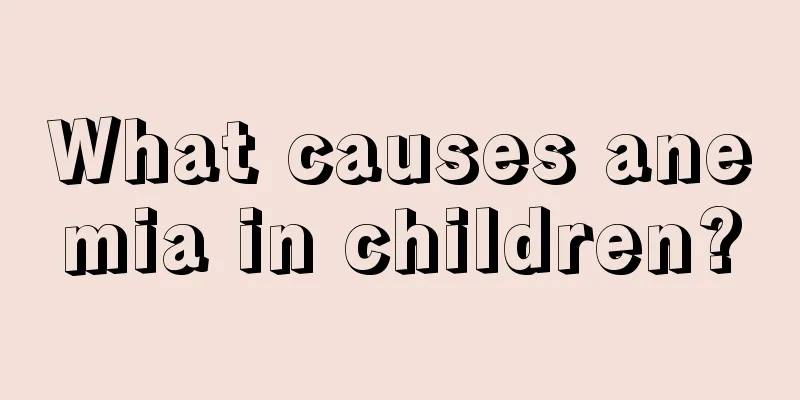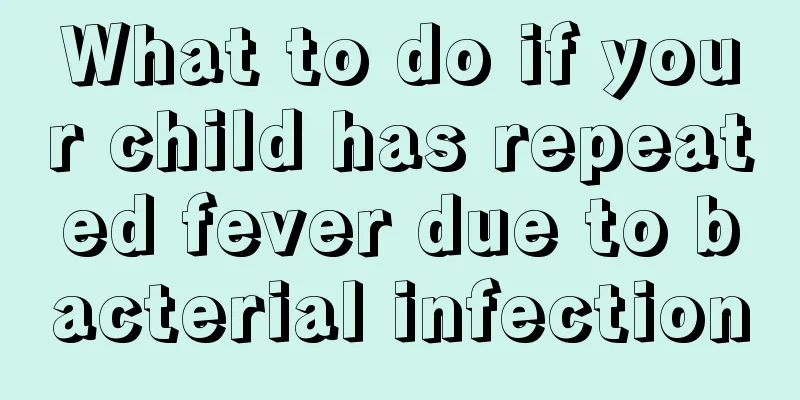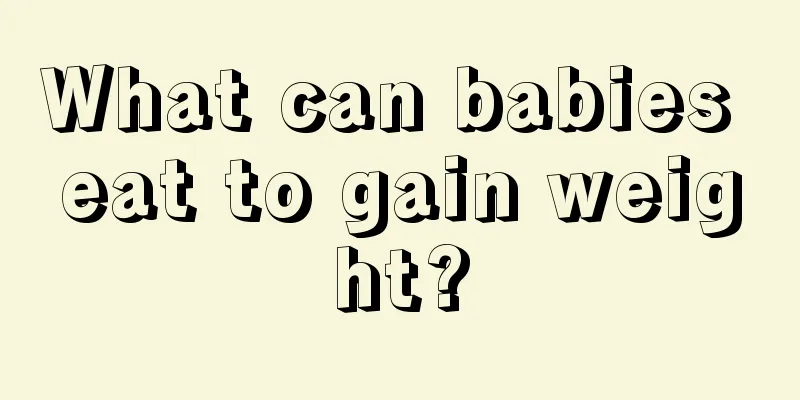What causes anemia in children?

|
When it comes to anemia, most people may think of anemia in women. Indeed, women have a higher chance of developing anemia because they lose blood due to menstruation every month, so anemia is more common. However, anemia is not exclusive to women. Other people may also suffer from anemia, including children. We know that children are in an important period of growth. If a child’s anemia is not corrected for a long time, the child’s future height may be affected. Therefore, parents of children with anemia should find out the cause in time and help their children with conditioning and treatment. So, what causes anemia in children? Some common causes of anemia in children: 1. Nutritional iron deficiency anemia Nutritional iron deficiency anemia is the most common type of anemia in children. The main clinical feature is microcytic hypochromic anemia, which is common in children aged 6 months to 2 years. (1) Insufficient iron storage in the body: The fetus obtains the most iron from the mother during the last three months of pregnancy. The normal full-term newborn has an iron storage capacity of about 250 to 300 mg (average 60 to 70 mg/kg). The stored iron and the iron released by the destruction of red blood cells after birth are sufficient to meet the needs of hematopoiesis within 3 to 4 months after birth. If iron storage is insufficient, iron deficiency anemia is more likely to occur early in infancy. Severe maternal iron deficiency anemia, premature birth or twin pregnancy resulting in low birth weight, and blood loss from the fetal circulation (such as fetal blood transfusion to the mother or blood transfusion to the other twin fetus) are all causes of reduced iron storage in the newborn. Delaying umbilical cord clamping after birth can provide the newborn with an additional 35 mg of iron. (2) Insufficient iron intake: Insufficient iron supply in the diet is an important cause of iron deficiency anemia. The iron content in human milk and cow's milk is low and insufficient for infants. If infants are fed with milk alone without adding iron-rich complementary foods in time, iron deficiency anemia is likely to occur. Iron deficiency anemia may also be caused by iron absorption disorders due to long-term diarrhea, gastrointestinal malformations, intestinal malabsorption, etc. (3) As a person grows faster, his blood volume increases with weight. The faster the growth rate, the greater the need for iron, and the more likely he is to suffer from iron deficiency. By the time an infant is one year old, his or her weight will have tripled to three times that of his or her birth weight; for premature infants, the weight may increase to five to six times. Therefore, infancy, especially premature infants, are most susceptible to iron deficiency anemia. (4) Iron loss or excessive consumption, food allergies, intestinal polyps, Meckel's diverticulum, hookworm disease, etc. can also cause intestinal blood loss. Losing 1 ml of blood is equivalent to losing 0.5 mg of iron. Long-term, small-scale blood loss is an important cause of iron deficiency anemia. Long-term and repeated infectious diseases can cause anemia due to increased consumption. 2. Nutritional megaloblastic anemia Nutritional megaloblastic anemia is a type of macrocytic anemia caused by a deficiency of vitamin B12 and/or folic acid. The clinical features are anemia, neuropsychiatric symptoms, and the presence of megaloblasts in the bone marrow. Treatment with vitamin B12 and/or folic acid is effective. Vitamin B12 and folic acid are both necessary substances for cell DNA synthesis and are important raw materials for hematopoiesis. Lack of these two substances can cause anemia. Vitamin B12 is mainly found in animal foods, so it is common in children who are fed with vegetarian breasts or have gastrointestinal absorption disorders. Folic acid is widely present in various vegetables and fruits, but is lacking in goat milk. Therefore, folic acid deficiency is common in people who are only fed with goat milk or who are severely malnourished or have intestinal absorption disorders. 3. Hemolytic anemia Hemolytic anemia refers to a type of anemia caused by shortened red blood cell lifespan, increased destruction, and enhanced bone marrow hematopoiesis that is insufficient to compensate for the loss of red blood cells. It is characterized by anemia, jaundice, hepatosplenomegaly, high reticulocytosis, and hyperplasia of bone marrow erythroblasts. |
<<: What are the symptoms of Down syndrome babies?
>>: What is the reason for low platelet count in children?
Recommend
What should I do if my baby always has eye mucus?
The baby always has eye mucus. Mostly it’s becaus...
What to do if your child coughs while sleeping
Now many parents report that their babies always ...
What are the symptoms of hunger diarrhea in babies?
What are the symptoms of hunger diarrhea in babie...
Causes of retinal hemorrhage in children
For children, their organs are not yet fully deve...
Symptoms of calcium deficiency in five-month-old babies
Nowadays, every family has only one child, and ma...
Tips for growing taller in junior high school
In fact, for children, the most critical period o...
What is the treatment for bacterial enteritis in infants?
Nowadays, every family has one child, and the chi...
What to do if children have tooth decay pain
When children experience pain caused by tooth dec...
What should I do if my child has a broken tooth?
Children will slowly start to grow teeth as they ...
Can babies with roseola be blown dry?
Parents are very protective of their infants and ...
How can students improve their memory?
Memory is very important for children, because we...
What should I do if my child likes to wet the bed?
In fact, it is quite common for children to wet t...
Will the child continue to grow taller after puberty?
The physical development of children has always b...
What to do if your child has ear pain in the middle of the night
Sometimes our children may have ear pain in the m...
How to treat anemia in children
Recently, many people's children have suffere...









